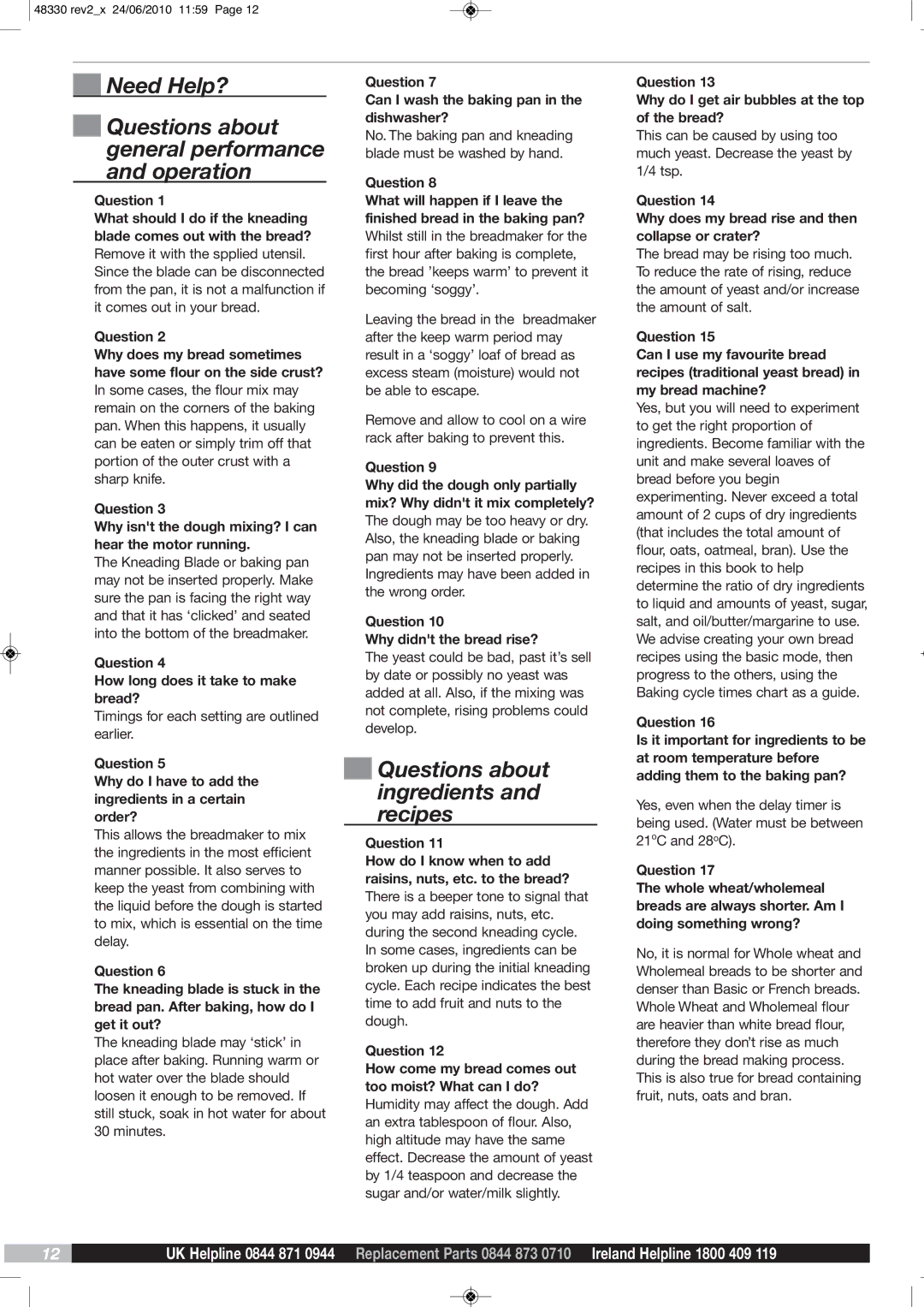BM48330 specifications
The Morphy Richards BM48330 is a state-of-the-art bread maker that embodies convenience, versatility, and quality in bread-making. This innovative appliance is designed for both novice and experienced bakers, allowing them to create delicious homemade bread with minimal effort.One of the standout features of the BM48330 is its user-friendly control panel. The LCD display provides clear information and guidance for choosing different settings, making the bread-making process intuitive. This model offers a variety of options, including thirteen different baking programs to cater to a broad range of preferences. Whether you’re in the mood for gluten-free bread, whole grain, or traditional white loaves, the BM48330 can accommodate your culinary desires.
Additionally, the machine boasts a customizable crust control feature. Users can select from light, medium, or dark crust options, allowing for personalization of the final product’s texture and flavor. The large viewing window allows bakers to monitor the progress of their bread without disrupting the process, providing a satisfying experience from start to finish.
The Morphy Richards BM48330 is equipped with a robust non-stick baking pan, making it easy to remove the bread once cooked and ensuring effortless cleaning. This is complemented by the removable kneading blade, which is designed to minimize residue and make post-baking cleanup a breeze. Furthermore, the machine has a delay timer of up to 13 hours, allowing users to prepare ingredients in advance and have fresh bread ready at their desired time.
Another notable characteristic of this bread maker is its compact design, which allows it to fit conveniently into any kitchen space without compromising on capacity. It can make a variety of loaf sizes, catering to small households and larger families alike.
The BM48330 also includes features such as a viewing window, automatic keep-warm function, and audible alerts for easy operation. With its combination of advanced technology and thoughtful features, the Morphy Richards BM48330 bread maker is an ideal addition for anyone looking to bring the joy of homemade bread into their home. It epitomizes the perfect blend of efficiency, creativity, and functionality, making it a worthwhile investment for all bread enthusiasts.

